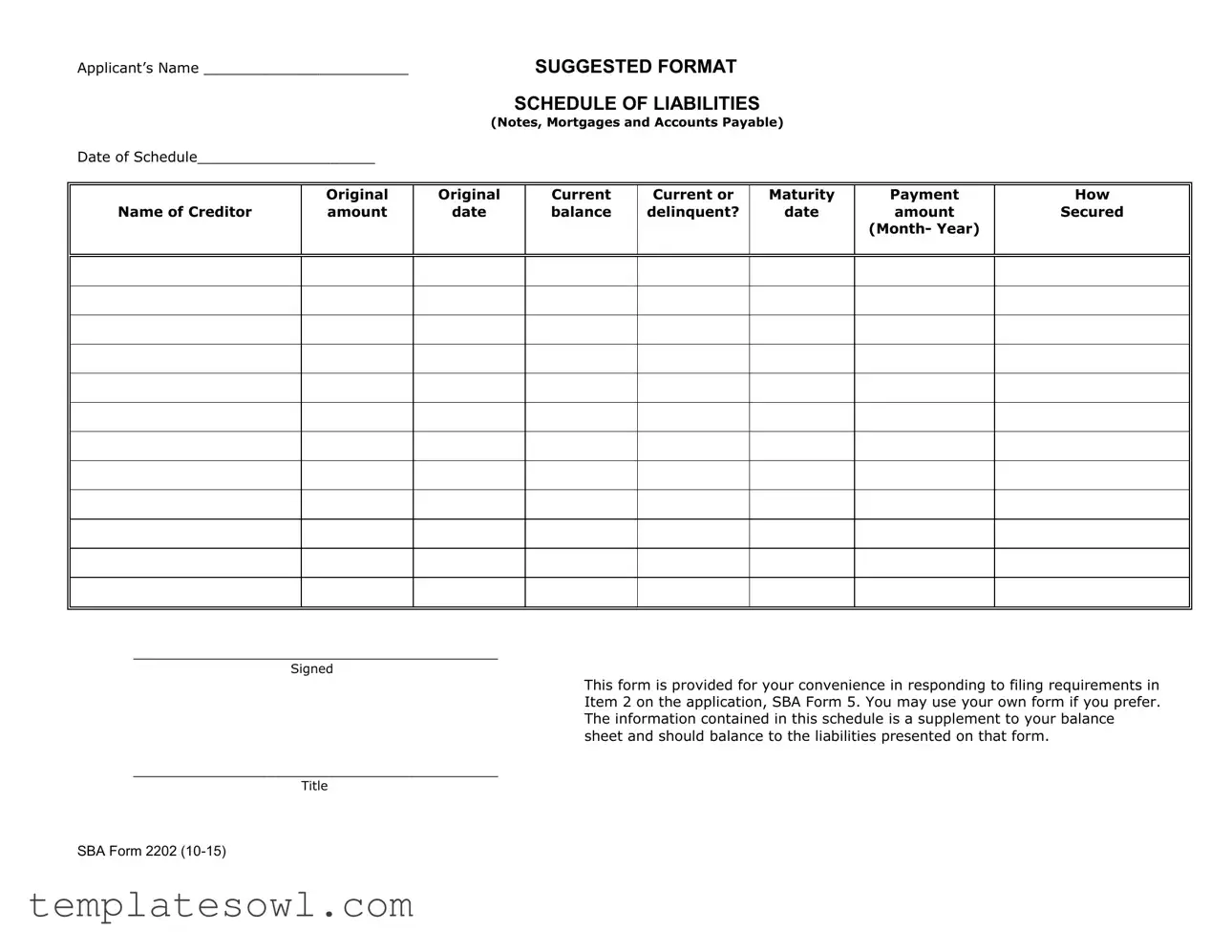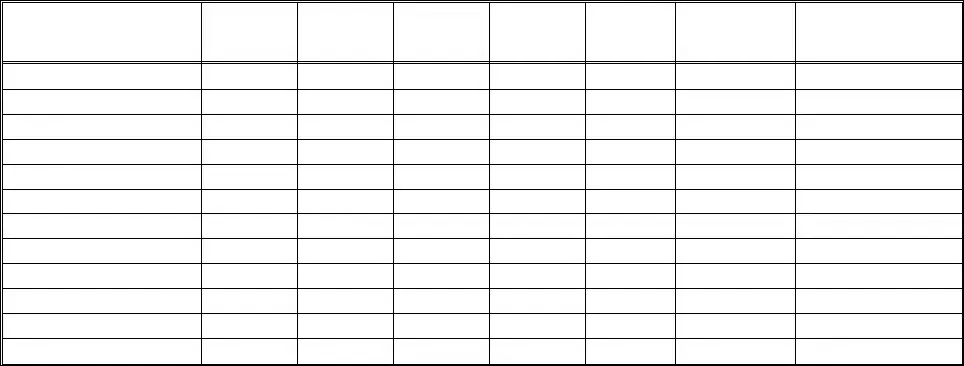What is the SBA 2202 form?
The SBA 2202 form is a schedule of liabilities used to list your outstanding financial obligations, including notes, mortgages, and accounts payable. This form is designed to help complete the application process for an SBA loan by providing detailed information about what you owe.
Who needs to fill out the SBA 2202 form?
Anyone applying for an SBA loan must fill out the SBA 2202 form. This information is necessary to assess your financial situation and understand your repayment obligations. A clear picture of your liabilities helps lenders make informed decisions.
What information do I need to provide on the SBA 2202 form?
You'll need to include the name of each creditor, original loan amounts, current balances, payment amounts, and maturity dates. Additionally, indicate whether the accounts are current or delinquent. This detailed breakdown is crucial for lenders reviewing your financial history.
Can I use a different format instead of the SBA 2202 form?
Yes, you can use your own format to present the required information about your liabilities. However, ensure that your document includes all necessary details specified in the SBA 2202 form. The goal is to provide clear and complete information for the lender.
How does the SBA 2202 form relate to my balance sheet?
The information on the SBA 2202 form is a supplement to your balance sheet. The total liabilities reported on this schedule should match the liabilities shown in your balance sheet. This consistency is important for accurate financial reporting.
Is there a deadline for submitting the SBA 2202 form?
The SBA 2202 form should be submitted along with your loan application. It is important to check the requirements for your specific loan application, as deadlines may vary based on the lender or program you are applying for.
What happens if I don’t provide the SBA 2202 form?
If you fail to provide the SBA 2202 form, your loan application may be incomplete, which could delay processing or result in denial. It is best to complete this form thoroughly and accurately to enhance your chances of loan approval.
Where can I obtain the SBA 2202 form?
The SBA 2202 form can be found online on the SBA website or may be provided by your lender. Ensure you have the most recent version to meet current requirements. Using outdated forms may cause confusion in your application process.

